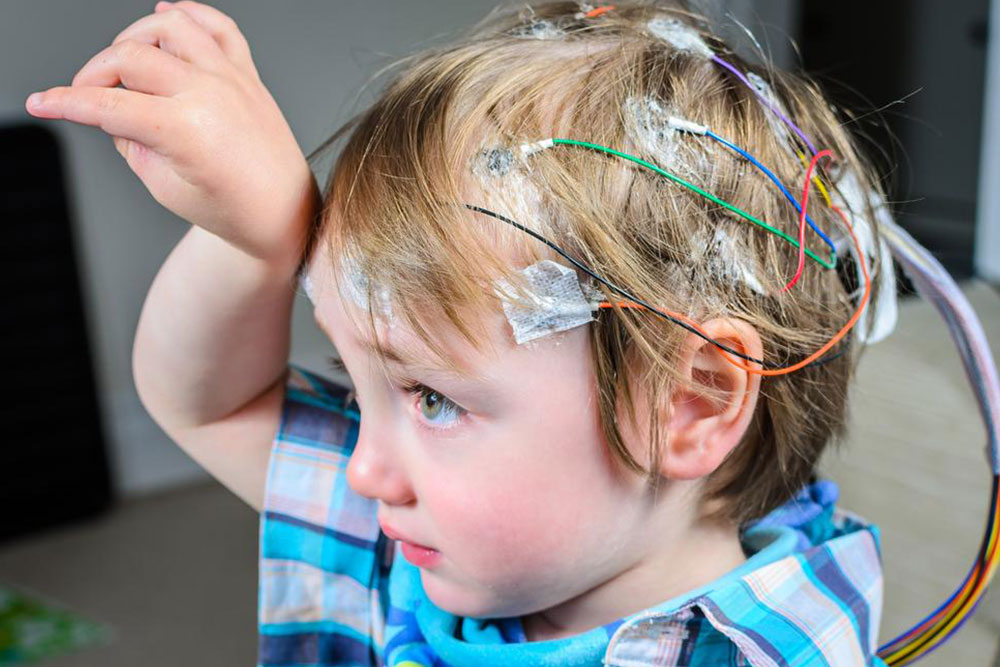A Comprehensive Guide to Focal Seizures: Causes, Symptoms, and Effective Treatments
Focal seizures are localized neurological events that require proper identification and management. This comprehensive guide covers their causes, symptoms, and treatment options, including medications and surgical procedures. Early diagnosis and tailored treatment plans help individuals maintain a good quality of life. Recognizing warning signs and knowing how to respond during episodes are crucial for safety and health. Advances in medical technology continue to improve outcomes for patients with focal seizures. Stay informed and consult healthcare professionals for personalized care.

Understanding Focal Seizures: Causes, Symptoms, and Treatments
Focal seizures, often referred to as partial seizures, represent a specific type of epilepsy that arises from abnormal electrical activity within particular regions of the brain. Unlike generalized seizures that involve multiple parts of the brain simultaneously, focal seizures originate locally and can remain confined or spread to other areas, leading to a diverse range of clinical manifestations. Recognizing the intricacies of these seizures, understanding their causes, and exploring available treatment options are crucial steps toward effective management and improving the quality of life for affected individuals.
Understanding the Nature of Focal Seizures
Focal seizures are characterized by their origin in a specific area of the brain. There are generally two categories:
Focal Seizures with retained consciousness (simple focal seizures): During these episodes, individuals remain aware and alert. Symptoms depend on the brain area involved, such as sensory changes or motor disturbances.
Focal Seizures with impaired consciousness (complex focal seizures): These involve a loss or alteration of awareness, often accompanied by automatisms like lip-smacking or repetitive movements.
It's important to recognize that symptoms can vary widely based on the seizure's origin within the brain. This diversity makes diagnosis challenging but also emphasizes the importance of understanding individual symptoms for better management.
Causes of Focal Seizures
The causes of focal seizures are multifaceted and may include a variety of neurological, structural, and metabolic factors. Some of the primary causes include:
Brain injuries: Traumatic brain injuries resulting from accidents, falls, or sports injuries can lead to scar tissue and abnormal electrical activity that precipitate seizures.
Brain tumors: Both benign and malignant tumors can disrupt normal neuronal function, triggering focal seizures.
Stroke and vascular issues: Ischemic or hemorrhagic strokes can damage brain tissue, creating focus points for seizure activity.
Infections: Conditions like encephalitis or meningitis can cause inflammation that damages brain tissue, increasing seizure risk.
Genetic predispositions: Some individuals inherit genetic factors that contribute to seizure susceptibility.
Developmental anomalies: Congenital brain malformations can be a source of focal seizures.
Understanding these underlying factors is vital for targeted diagnosis and treatment, enabling healthcare providers to tailor interventions according to specific etiologies.
Signs and Symptoms of Focal Seizures
The manifestations of focal seizures can be broadly categorized into external signs observable by others and internal sensations experienced solely by the individual. Recognizing these symptoms can aid in prompt identification and treatment.
External Symptoms
Speech difficulties such as sudden slurring or inability to speak clearly
Twitching, jerking, or spasms localized to a body part, such as an arm, leg, or face
Unexplained episodes of laughing, crying, or other emotional expressions that seem out of context
Altered awareness or confusion during and after the seizure
Internal Symptoms
Persistent tingling sensations or a feeling of goosebumps on the skin
Visual disturbances, including flashes of light or blurred vision
Dizziness, lightheadedness, or disorientation
Unusual smells or odors that are absent from the environment
Sudden spells of intense fear, joy, or other strong emotions without apparent trigger
How to Respond During a Focal Seizure
During a seizure episode, it's important to remain calm and take steps to ensure the safety of the affected individual. Immediate actions include:
Gently guiding the person to a safe space away from dangerous objects or stairs to prevent injuries
Helping them lie down comfortably in a position that prevents choking, especially if they are on their back
Reassuring and staying with the person until the seizure subsides
Note the duration of the seizure and any specific symptoms to inform medical professionals
Do not attempt to restrain movements or put anything in their mouth, as this can cause injury
Managing Focal Seizures: Treatment Options
Effective management of focal seizures involves a combination of medication, lifestyle adjustments, and in some cases, surgical interventions. Treatment plans should be tailored to each individual based on seizure severity, underlying causes, and overall health.
Pharmacological Treatments
Anti-epileptic drugs (AEDs) are the primary treatment modality for focal seizures. Common AEDs include carbamazepine, levetiracetam, lamotrigine, and phenytoin. The choice of medication depends on factors such as age, comorbid conditions, and response to initial therapy. Regular monitoring of drug levels and side effects is essential to optimize treatment and ensure safety.
Surgical Interventions
For patients with drug-resistant focal seizures, surgery may be considered. Surgical options aim to remove or disconnect the epileptogenic focus within the brain. Types include:
Resective surgery: Removal of the brain tissue responsible for seizure activity
Laser ablation: Minimally invasive procedure that destroys abnormal tissue using focused heat
Vagus nerve stimulation (VNS): Device implanted to send electrical impulses to reduce seizure frequency
Responsive neurostimulation (RNS): Implant detects abnormal activity and delivers targeted stimulation
Emerging Technologies and Future Directions
Research continues into advanced treatment modalities, including brain-computer interfaces, gene therapy, and personalized medicine approaches to epilepsy. These innovations aim to improve seizure control and reduce side effects associated with traditional treatments.
Living with Focal Seizures: Tips for Better Quality of Life
While seizures can be challenging, many individuals live fulfilling lives with proper management. Key strategies include:
Adhering strictly to prescribed medication regimens
Maintaining regular medical check-ups and follow-up appointments
Identifying and avoiding seizure triggers such as stress, sleep deprivation, or certain foods
Keeping a seizure diary to track patterns and inform treatment adjustments
Educating family, friends, and colleagues about seizure management and first aid
In conclusion, understanding focal seizures—their causes, signs, and treatments—is essential for anyone affected by epilepsy. With advances in medical research and personalized care, many individuals can manage this condition effectively and lead active, healthy lives.





